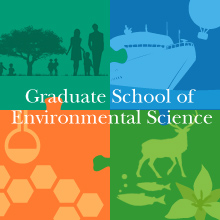7/6 ESS Seminar Southern Ocean ecosystems in a changing climate
2012-07-03研究院アワー (ESS seminar)
Date: 2012年7月6日(金) — July 6, 2012
Time: 13:30-14:30 & 14:45-15:45
Place: D201 (環境科学院講義棟大講義室)
Speakers: Simon W. Wright (Australian Antarctic Division, Australia),
Stanford B. Hooker (NASA/GSFC, USA)
Chair: Koji Suzuki (鈴木 光次)
Talk1: 13:30-14:30
Title:Southern Ocean ecosystems in a changing climate
Speaker: Simon W. Wright (Australian Antarctic Division, Australia)
Abstract: This talk will discuss the structure of Southern Ocean ecosystems,
particularly the microbial system, and how predicted changes in the
environment may affect productivity. Research approaches to understanding
and detecting changes in microbial system, from shipboard monitoring,
surveys, process studies in minicosms, to satellite observations, will be
discussed, along with recent results. Consequences for grazing animals and
other dependent species will also be considered.
Talk 2: 14:45-15:45
Title:Calibration and Validation Activities for Next-Generation
NASA Missions
Speaker:Stanford B. Hooker (NASA/GSFC, USA)
Abstract:: As part of an emphasis on innovation in global observations of
the Earth system from space, NASA has a current- and next-generation
requirement to collect high-quality in situ data for the vicarious
calibration of ocean color satellite sensors and to validate the algorithms
that use the remote sensing data.
Presently, satellite missions emphasize the open ocean and the estimation of
the chlorophyll concentration using primarily the visible (VIS) and
near-infrared (NIR) parts of the spectrum. Future sensors are expected to
provide additional water properties and atmospheric data products from an
expanded spectral band set spanning the ultraviolet (UV) to the short wave
infrared (SWIR).
The joint oceanic-atmospheric perspective combined with the enhanced
spectral response allows for improved capabilities in shallower waters and
better atmospheric correction. The increased mission sophistication places
significant demands on calibration and validation activities, however,
because of the greater optical complexity and heterogeneity of coastal
waters. This presentation summarizes the new hardware and software
technologies being developed to provide baseline information applicable to
next-generation missions, like SGLI, PACE, and ACE, while simultaneously
contributing to the requirements of current satellite sensors (e.g., MODIS).
The emphasis is on modular designs, commercial availability, mobile
solutions, and public access, so the global community can participate cost
effectively. For example, the modularity allows the ground-truth system to
expand from a lower-cost starter system as resources evolve. Sensitivity
studies are being performed to establish observational uncertainties and the
advantages of instrument configurations, particularly with respect to
spectral end-member analyses (e.g., UV-NIR versus VIS). New in situ
radiometric observing systems with state-of-the-art data processing
capabilities to support cost-conscious oceanic and atmospheric research are
described.













